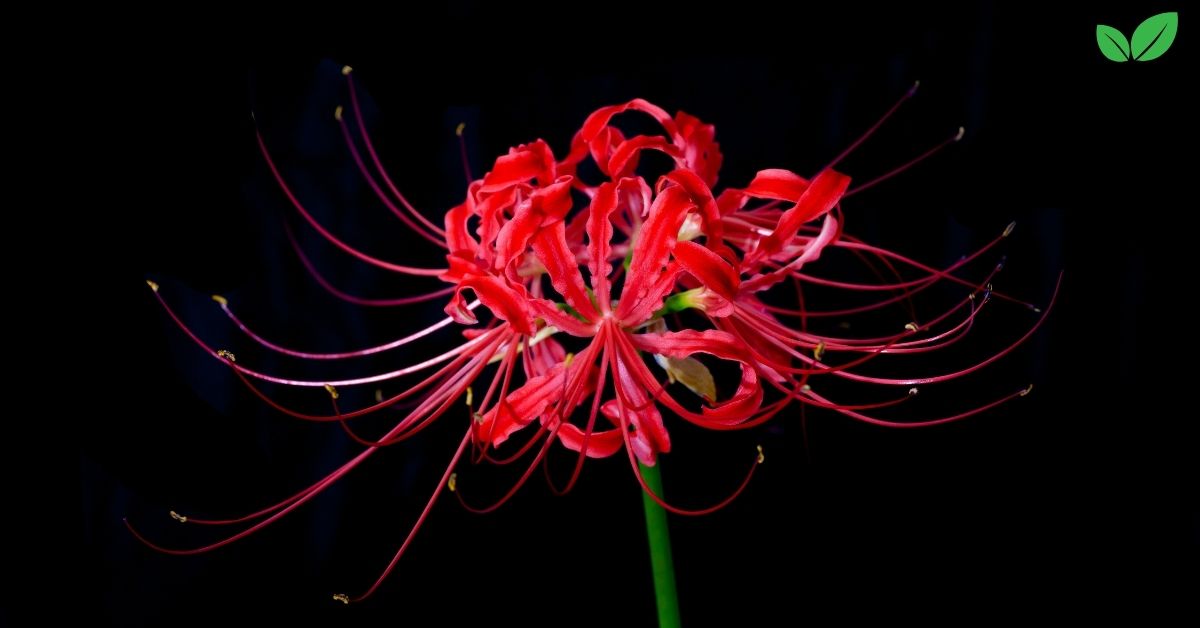Radiata lycoris, commonly known as the red spider lily, is a striking plant renowned for its vibrant red blooms and unique cultural significance across various parts of Asia. Beyond its aesthetic appeal, this species plays an important role in the ecosystems it inhabits and offers several ecological benefits. In this article, we’ll explore the environmental niche of Radiata lycoris, examining its habitat, role in local ecosystems, sustainable cultivation practices, and its significance in the face of climate change.
What is Radiata Lycoris?
Radiata lycoris, or Lycoris radiata, is a perennial flowering plant belonging to the Amaryllidaceae family. Known for its slender, long-tubed flowers and spider-like petals, it is commonly found in parts of East Asia, particularly in Japan, China, and Korea. In these regions, it is celebrated as a symbol of autumn, as its bright blooms herald the changing season. The plant’s ecological role, adaptability, and cultural importance make it a fascinating subject for environmental study.
Habitat and Growing Conditions of Radiata Lycoris
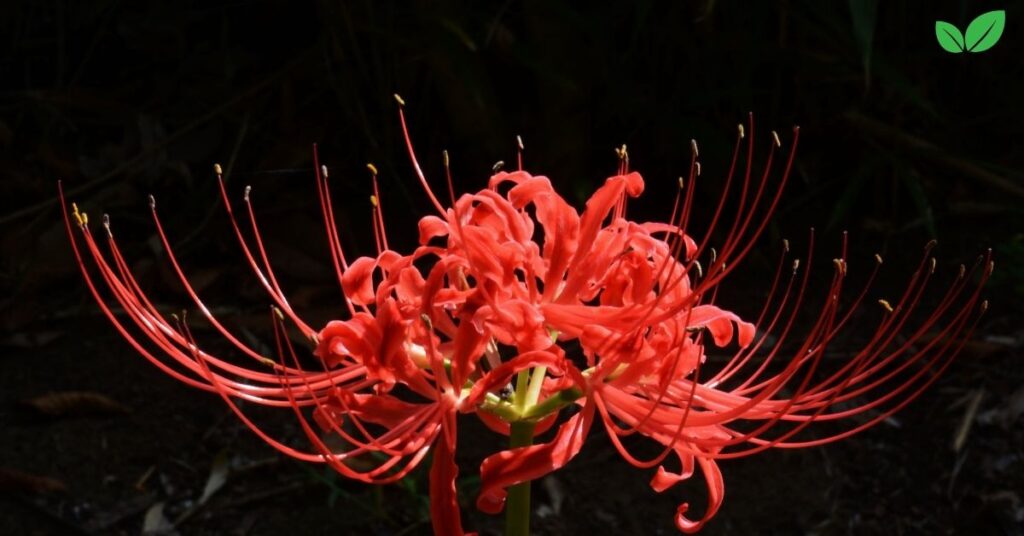
Natural Range and Preferred Climate
Red spider lily is native to East Asia but has been naturalized in parts of the United States and other temperate regions. It thrives in warm, humid climates and prefers partial to full sunlight. This plant is highly adaptive and grows well in various soil types, provided they are well-drained.
Growth Cycle and Seasonal Blooming
One of the unique aspects of Radiata lycoris is its growth cycle. The plant is often dormant during the spring and summer months and only begins to grow after the arrival of autumn rains. Blooming typically occurs in late summer or early fall, and the flowers emerge without leaves, giving them the nickname “naked lilies.” This adaptation allows Radiata lycoris to thrive in environments where other plants may struggle due to seasonal drought or temperature extremes.
Soil and Water Requirements
Radiata lycoris prefers well-drained, moderately fertile soil and can tolerate slightly acidic to neutral pH levels. It requires minimal water during its dormancy period, making it a suitable choice for regions with limited water availability. However, during its active growth phase, it requires consistent moisture to support flower development.
Ecological Importance of Radiata Lycoris

Supporting Pollinators
Radiata lycoris plays an essential role in supporting local pollinators. Its bright red flowers and unique shape attract a variety of insects, including bees, butterflies, and occasionally even hummingbirds. In environments with limited flowering plants during late summer and fall, Red spider lily provides a vital source of nectar for these pollinators, contributing to local biodiversity and ecosystem health.
Erosion Control
In some regions, Radiata lycoris is planted on slopes or riverbanks to help prevent soil erosion. Its bulbs and root systems help stabilize the soil, making it less prone to erosion from heavy rainfall or flooding. This is especially valuable in areas prone to seasonal monsoons or other weather events that can lead to soil degradation.
Role in Biodiversity
Radiata lycoris contributes to biodiversity by providing shelter and food for various insects and small animals. It also plays a role in forest ecosystems, where it grows under deciduous trees. By coexisting with other flora, Red spider lily adds to the diversity and complexity of the ecosystem, promoting a more resilient environment.
Environmental Impact of Radiata Lycoris Cultivation
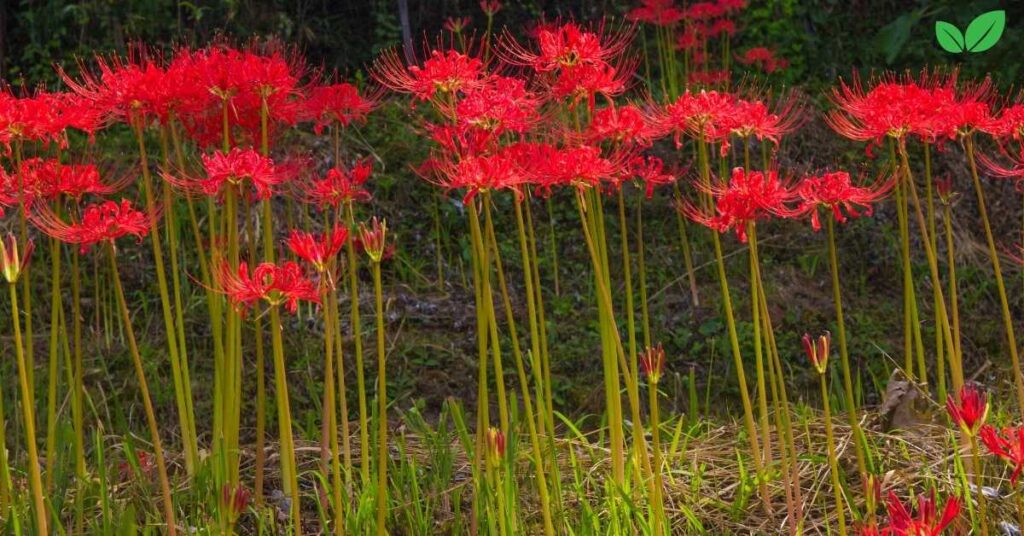
Positive Impacts
When cultivated sustainably, Red spider lily can offer several environmental benefits:
- Minimal Water Requirement: Due to its dormancy during the summer, Radiata lycoris has a reduced water requirement compared to many other ornamental plants. This makes it an eco-friendly choice for landscaping in areas with water scarcity.
- Low Fertilizer Need: Radiata lycoris does not require frequent fertilization, as it stores nutrients in its bulbs. This reduces the risk of nutrient runoff, which can pollute nearby water sources.
- Pollinator Support: By providing food for pollinators during late summer and fall, Radiata lycoris helps sustain local pollinator populations. This is particularly beneficial in areas where other flowering plants may be scarce during this time.
Potential Negative Impacts
However, there are some environmental concerns associated with the cultivation of Red spider lily, especially when it is introduced to non-native environments:
- Invasive Potential: In some regions outside its native range, Radiata lycoris has shown the potential to spread aggressively, displacing native plant species and disrupting local ecosystems.
- Soil and Water Impact: If planted extensively in non-native areas, Radiata lycoris could alter the soil’s nutrient composition or water dynamics. This may affect the growth of nearby native plants and disrupt natural water flow.
- Pesticide Use: While generally resilient, Radiata lycoris can sometimes be affected by pests or diseases. In conventional cultivation, this may lead to the use of pesticides, which can have negative effects on the environment and non-target species.
Sustainable Cultivation Practices for Radiata Lycoris
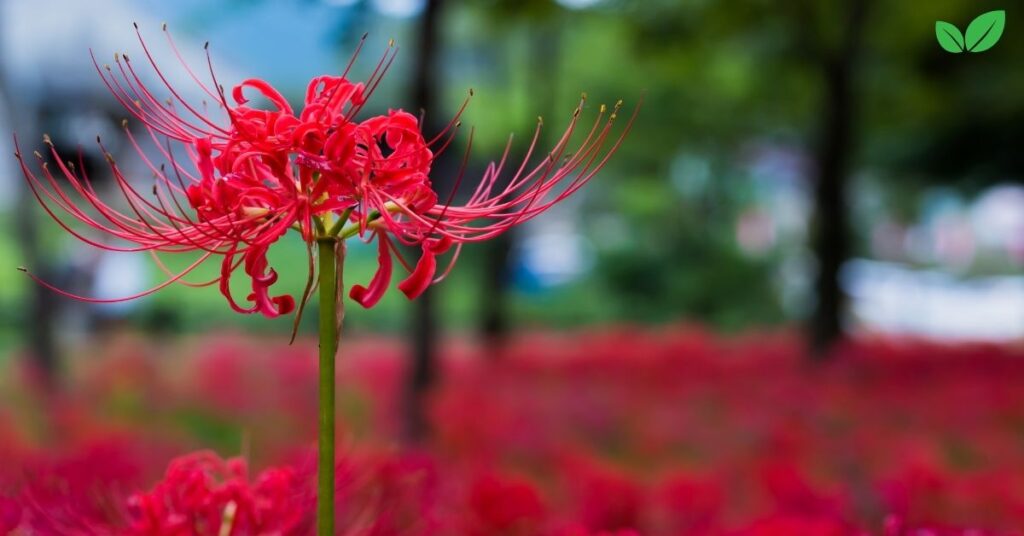
Organic Gardening Techniques
One of the most effective ways to grow Red spider lily sustainably is by using organic gardening techniques. Organic gardening avoids synthetic fertilizers and pesticides, relying instead on natural methods to support plant health. Here are some practices that can help promote sustainable cultivation:
- Composting: Applying organic compost to the soil can provide necessary nutrients without the risk of chemical runoff.
- Mulching: Mulch helps retain soil moisture, reducing the need for frequent watering, and can also suppress weed growth, which minimizes competition for resources.
- Biological Pest Control: Encouraging beneficial insects that prey on pests can help keep pest populations in check without the need for harmful chemicals.
Companion Planting
Companion planting can enhance the environmental benefits of Radiata lycoris. By planting it alongside other native plants, gardeners can create a diverse landscape that supports a wider range of wildlife. Companion planting can also help reduce the risk of pests and diseases by promoting a balanced ecosystem.
Reducing Water Use
Since Radiata lycoris has a low water requirement during its dormant period, it can be an excellent addition to xeriscaping—a landscaping method designed to reduce or eliminate the need for irrigation. In areas with seasonal rainfall, collecting and storing rainwater for use during the active growth phase can further reduce water consumption.
Radiata Lycoris and Climate Change

Resilience to Climate Extremes
As climate change leads to more extreme weather patterns, plants like Red spider lily which can tolerate both drought and occasional flooding may become increasingly valuable in sustainable landscaping. The plant’s adaptation to warm, humid climates and its ability to survive with minimal water make it a resilient option for gardens and natural areas facing changing conditions.
Role in Carbon Sequestration
While Radiata lycoris does not sequester large amounts of carbon, like larger trees or shrubs, it still contributes to carbon sequestration through photosynthesis. In areas where it is grown as part of a diverse landscape, Radiata lycoris plays a small but meaningful role in capturing carbon from the atmosphere, helping mitigate the effects of climate change on a local scale.
Supporting Biodiversity in Changing Climates
As climate change threatens biodiversity, Radiata lycoris can provide essential resources for pollinators and other wildlife. By supporting pollinator populations, the plant helps maintain biodiversity, which is crucial for the resilience of ecosystems under the pressures of climate change. In regions where native flowering plants are in decline, Radiata lycoris can serve as an important food source and habitat.
Conservation Efforts and Educational Initiatives
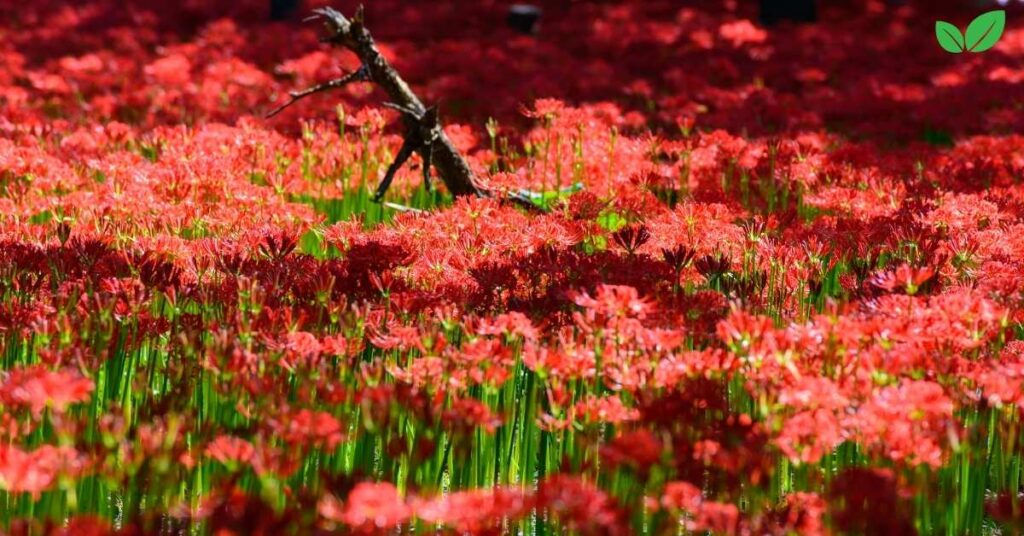
Protecting Native Habitats
Conserving the natural habitats of Red spider lily is essential for preserving biodiversity. Efforts to protect wetlands, woodlands, and other natural areas where this plant grows can help maintain healthy ecosystems. Conservation programs that focus on habitat preservation can also protect the wildlife that depends on Radiata lycoris and other native plants.
Educational Programs
Educational programs that teach about the environmental benefits of Radiata lycoris can promote sustainable gardening and landscaping practices. By raising awareness about the plant’s role in ecosystems, these programs can encourage individuals and communities to adopt eco-friendly cultivation techniques and reduce their environmental impact.
Research and Development
Ongoing research into the ecological and environmental benefits of Radiata lycoris can help inform sustainable cultivation practices. Studies on its invasive potential, soil impact, and role in supporting pollinators can provide valuable insights for gardeners, landscapers, and conservationists.
Conclusion: Embracing the Environmental Benefits of Radiata Lycoris
Radiata lycoris, or the red spider lily, is more than just a beautiful flower. Its ecological importance, adaptability to climate extremes, and role in supporting biodiversity make it an invaluable addition to natural and landscaped environments. By embracing sustainable cultivation practices and promoting conservation efforts, we can ensure that Radiata lycoris continues to thrive while enhancing the resilience of the ecosystems it inhabits.
Read More: Hibiscus: A Flower with Global Appeal and Environmental Significance

